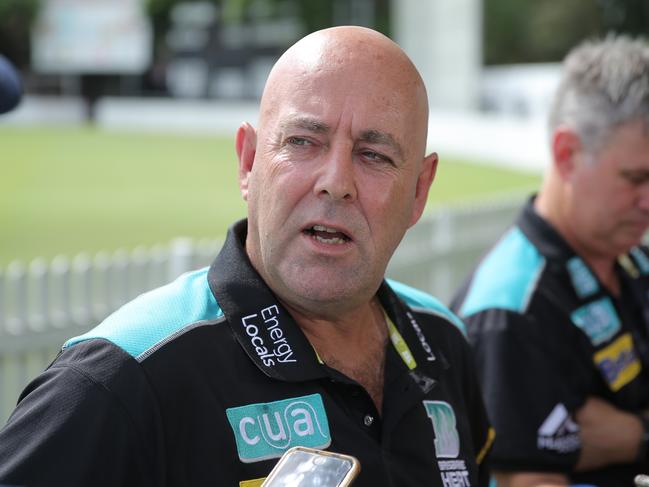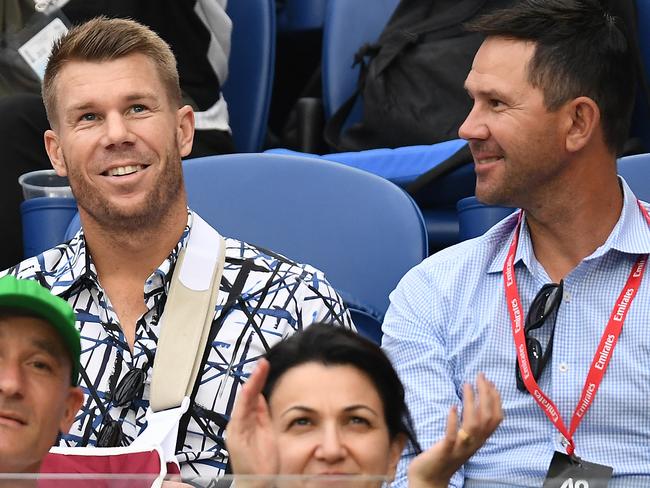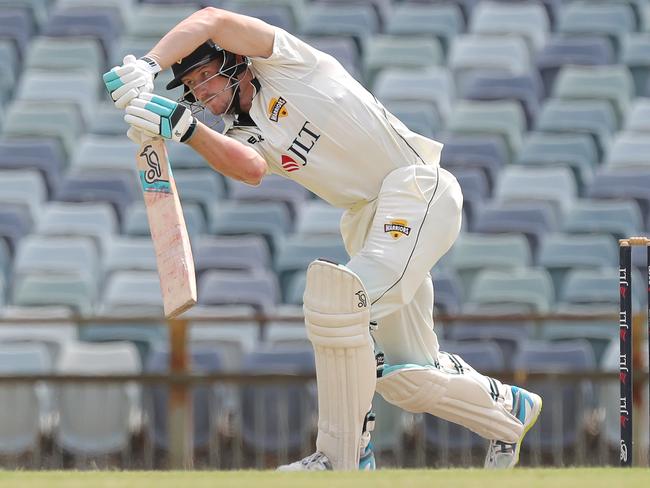Infamous ball-tampering scandal not going away any time soon
Darren Lehmann claims “the game is bigger than one incident, so it’s time to move on” but the ball-tampering scandal that rocked the cricketing world is not going away for a long time, writes RUSSELL GOULD.
Cricket
Don't miss out on the headlines from Cricket. Followed categories will be added to My News.
Steve Smith and David Warner have 21 days of their ban to serve before they move straight back in to the Australian team and play a role in both the World Cup and the Ashes.
BOOF’S BACK! MAJOR NEW ROLE REVEALED
ASHES CLASHES: WHO WILL BE AUSTRALIA’S ASHES ALL-ROUNDER?
CLASS ACT: PUCOVSKI RETURNS FIRE WITH MASTERFUL CENTURY
Cameron Bancroft is back in Ashes contention too after returning to the Sheffield Shield with a century.
Less than a year after the ball-tampering scandal everything, outwardly, is returning back to normal in Australian cricket.

But have we truly moved on from that moment in South Africa which resulted in those four, three by order, Lehmann of his own volition, being removed from the game?
“The game is bigger than one incident, so it’s time to move on,” Lehmann said after confirming he was taking over as Brisbane Heat coach, again.
But has cricket really moved on from that one incident which, as revelations continued, as cultures were reviewed both at a team and administration level, more people were moved on?
The old CEO James Sutherland went, then the Cricket Australia chairman, David Peever, also exited, incredibly reluctantly, as his reign was found to be one which created a culture that, if not toxic, was at least poisonous.
Cricket Australia board member, long-time Australian captain and revered figure in the sport Mark Taylor also opted when introspection became mandatory.

“It’s taken its toll on me,” said Taylor who as a player pitted himself against some of the best, and wildest bowlers in history but couldn’t handle the behaviour of others in his sport.
Pat Howard moved out too, six months before he was likely to be pushed, when the Longstaff review, not ordered but demanded as Australians turned up their noses at the sport, reported back that players were operating in a “gilded bubble” and lacked “emotional maturity”.
Bancroft conceded as much when, on the eve of his return to playing, he conceded he “couldn’t say no” when Warner asked him to take that little piece of yellow sandpaper out on the field at Cape Town.

The footage won’t ever go away. It will go on permanent rotation when Smith and Warner play their first game back for Australia, most likely in the World Cup.
The footage won’t disappear when the same pair put their baggy green caps back on when the Ashes starts either.
Infamy is the “state of being well known for some bad quality or deed”.

Apologies, contrition, introspection, change, positivity and good behaviour are just about all the key players in the scandal could do to this point. They can’t change history.
Fifties, hundreds, Test match wins and the passage of time will come next.
But what they did, and what cricket went through as a result, will never, ever go away.



